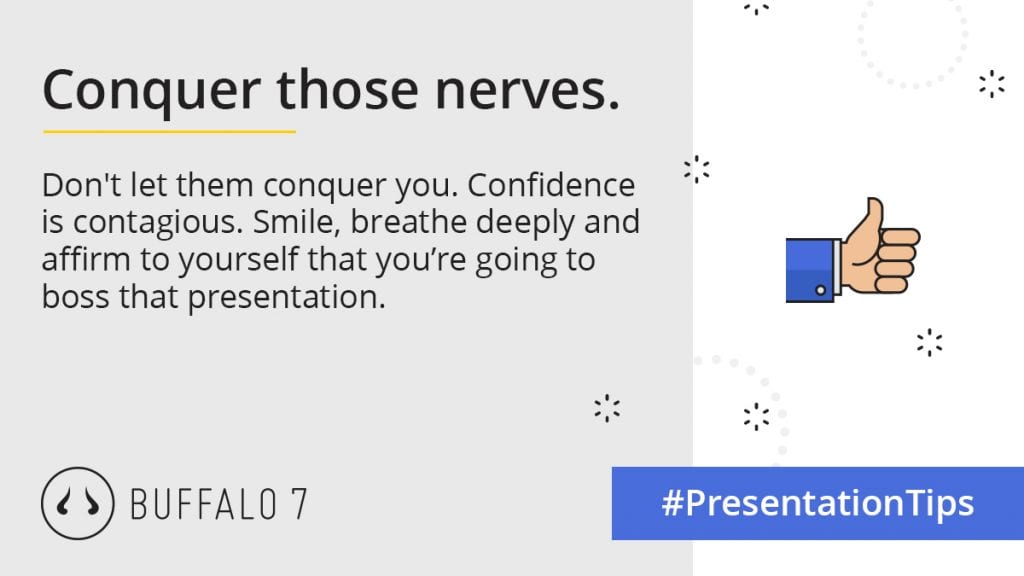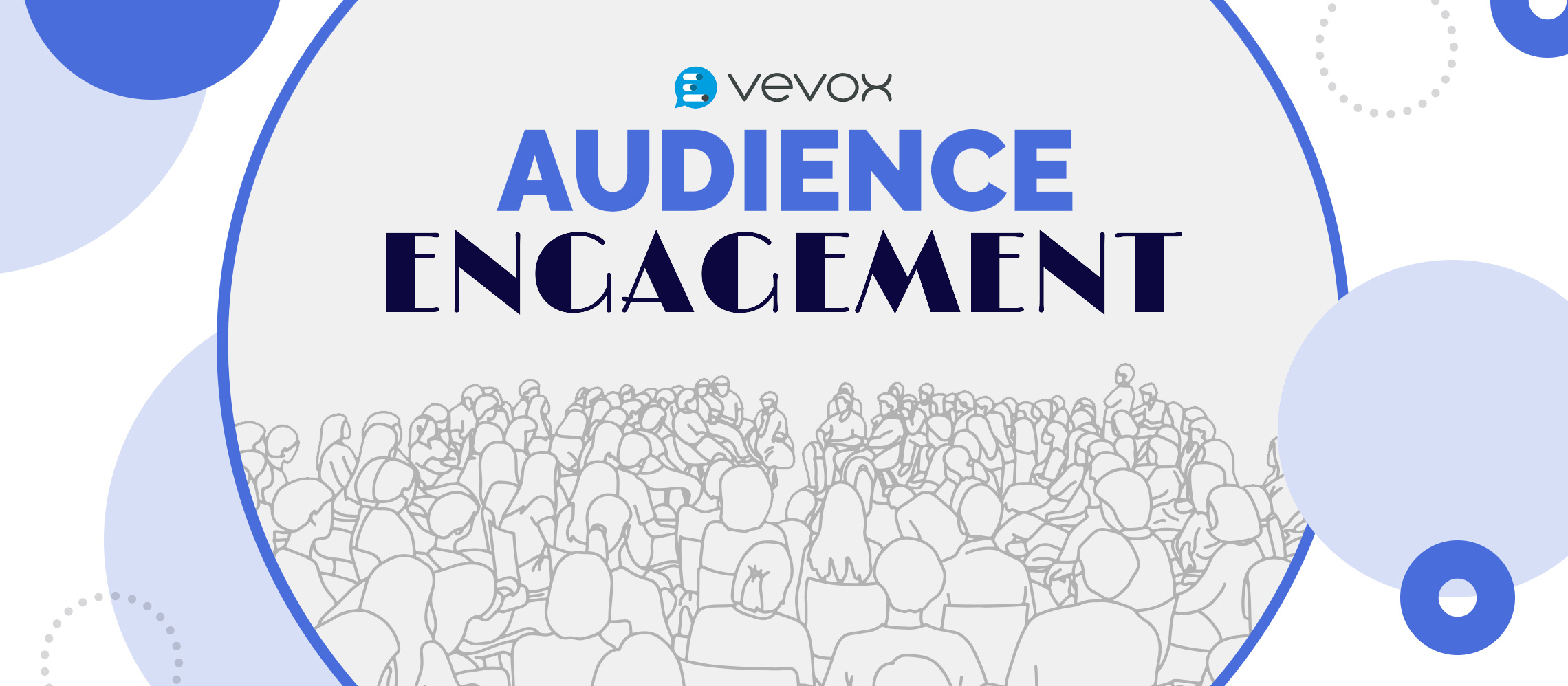The author’s views are entirely his own and may not necessarily reflect the views of Buffalo 7.
We have all attended presentations in our day-to day-lives. From internal and external meetings to running training sessions and workshops. If they are executed well, they can be a key tool to connecting, engaging and inspiring an audience. However, there are those presentations that are so dull that they are memorable for all the wrong reasons…
Usually, it’s because presenters seem to get in to bad habits and sometimes inadvertently fall in to the trap of making the most common faux pas. Sometimes, the best presentations do the ‘simple’ things well, such as clear diction, well-structured content and well-thought out delivery. These ‘simple’ things can easily be forgotten and too much time can be spent on focusing on flashy content and high-profile production value.
To help you avoid these common faux pas and to make sure your next presentation goes without a hitch, take note of the four best presenting practices that we think everyone should follow.
Meaningful content
It all starts with the presentation topic and content. The trap here is to get carried away by writing full sentences on slides. The reality is that if you display more than a couple of points on a slide, your audience will start to lose interest and they won’t take in all the information. Focus on creating slides that have one or two key points that make a bold statement to your audience. Less is more, and by having a bold statistic or fact on a slide, it actually entices the audience to listen further to your explanation on what the point means.

The other main faux pas, when it comes to content, is not making it relatable and meaningful to your audience. Instead, address the challenges and interests of the audience by giving relatable examples and anecdotes. If you truly want to find out what the audience wants to know, then running a live poll in your presentation can help to identify the crux. Make sure your audience understand the ‘what’s in it for me’ (WIIFM), so they have their expectations set and they feel satisfied that this presentation will be useful to them.
A clear and coherent structure
Audiences like it when they can see a clear, logical path to the end of a presentation. Think about the story of the presentation, as this will help to paint a picture of how each slide will flow into one another. Transitions in presentations should be smooth and allow the audience members to understand the key objectives of each section. By clearly signposting each section and having a clear structure, it enables you to be more focussed as a presenter and to communicate better.
When bringing your presentation around to a close, avoid introducing new subject matter, points or evidence. Instead, spell out the outcomes of your objectives and give a clear-cut summary that recaps the main points. This will help the audience to remember the ‘WIIFM’ (what’s in it for me) and to retain the key learnings from your presentation.
Audience participation is key to keeping the engagement levels up. The rule that presenters follow is this: every 10 minutes, you should change up the presentation to maintain the attention of the audience. Encouraging audience questions and setting time aside for a live audience Q&A can help to increase interaction, and it shows that you are keen for people to get involved.
The overall delivery
Even the finest content and slide deck cannot save a badly delivered presentation. Poorly-delivered presentations can all come down to careless body language and a lack of elocution. As an audience, we want to clearly hear every word and understand what the presenter is saying. Think about the pace of your speech, voice modulation and phrasing. If you rush certain words (especially important words), the sentence that you are getting across to the audience then lacks meaning.
Take your time and gauge the audience’s reaction. It can sometimes feel daunting to face up to an audience and give eye contact to several people, but it makes it more personal and relatable if you are communicating with them directly. Likewise, be authentic and be yourself. People will relate more to you if you open up and try not to put on a ‘show’. Injecting professional humour (if appropriate to do so) can also be a good way to break the ice and to connect with your audience.
If you are engaging with the audience verbally and physically, then you are more likely to connect with them and maintain their attention throughout. There is nothing worse than a body turned towards the presentation slides, reading off slide points one by one in a rushed manner. This shows a disinterest in what the audience is thinking and, represents a lack of confidence. If you’re more confident, relatable and communicating with your audience directly, then they will relax more and will be more responsive.

Practice, practice and you guessed it… practice!
The well-known phrase “Practice makes perfect” could not be any more applicable than when it comes to the art of presenting. Some of the best presenters out there today didn’t start off that way, they learnt their craft and put in the time to perfect their presentations.

There are many ways to practice your presentation and ensure everything runs smoothly on the day. Videoing yourself is just one way that is useful for seeing your presentation back and for reviewing your performance. Likewise, practicing with a ‘test audience’ allows you to rehearse in the real environment and to properly test all of the different elements of your presentation, such as the slide deck, technology and script. Doing these sorts of live rehearsals and tests will give you more confidence and peace of mind when running the presentation on the day.
Preparation is key for successful presentations, but also prepare for the unexpected. Think about what questions you might get if running an audience Q&A and how you will handle difficult questions. Rehearsing to go off script and improvising in rehearsals can help you to adapt your presentation in the live scenario.
There are lots of presenting tools and audience engagement technology out there that can help you enhance the experience for your audience, but getting these four elements right is the perfect starting point to delivering a great presentation. To read more audience engagement tips, head over to the Vevox blog here.
About the author
Ben Waugh is the Content Manager for Vevox and graduated from the University of Southampton. He is a fanatic of the Creative Arts, be that journalism, art or music and he even composes film music in his spare time.
Vevox is an award-winning audience response app that thousands of global corporations have adopted to make their presentations and meetings unmissable through PowerPoint polling and digital Q&A.


